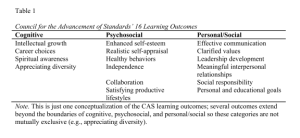Thurber, C.A. & Walton, E.A. (2012). Homesickness and Adjustment in University Students. Journal of American College Health, 60 (5), 415-419.
What does the research literature say about homesickness among university freshmen? Doctors Christopher A. Thurber and Edward A. Walton provide a clear and concise summary in an article published in the Journal of American Health in 2012.
Reviewing the recent literature on the topic, the researchers presented lists of conditions that result from intense homesickness, risk and protective factors for homesickness, and empirically based strategies for both prevention and treatment. They concluded the article by calling upon practitioners to implement and then test the effectiveness of interventions to address the issue.
Strengths and Critiques
The organization of this paper was excellent. The paper was easy to follow, the writing was clear and concise, and the sections were both understandable and sensible. Most importantly, the paper was a helpful contribution to the field of student retention literature because it provided an excellent and user-friendly summary of recent research on homesickness along with sound strategies for intervention. A university administrator who wants to address homesickness among students but isn’t sure where or how to start could read this article and walk away with both an understanding of the issue and a plan for how to tackle it.
The major thing lacking in this paper is a clear theoretical framework. The authors did not espouse any particular theory. Instead, they just wrote about the challenges that many students face when they transition to a university setting and how those challenges can cause homesickness. The authors also omitted a data collection and analysis section, presumably because they did not conduct an original study other than a literature review. They did, however, note that a review had already been done on homesickness in children and adolescents, which justified that their review focus on research on young adults at postsecondary institutions. They also noted that risk and protective factors for homesickness for youth are nearly identical as risk and protective factors for adults.
The authors’ discussion of the topic, woven throughout the paper, was particularly strong. They noted that a simple dichotomy of students who are homesick and those who are not is not helpful to understand the issue because so many students, if not all, experience some degree of homesickness. Instead, the authors recommended conceptualizing homesickness as a spectrum with varying intensity and then distinguishing between normal levels of homesickness and more severe levels which are problematic (including consequences such as significant distress that make those levels problematic). This conceptualization is helpful because there are specific indicators of when homesickness levels have become above the normal intensity, and the acknowledgement that there is a normal experience of homesickness can help administrators and practitioners with implementing one of the authors’ intervention strategies, which is to normalize homesickness among students.
Commentary
University and college administrators concerned with student retention should definitely address homesickness, given a finding cited in this paper that homesick students are significantly more likely to drop out of school. I have anecdotal evidence that confirms this finding. In my place of practice, I have noticed that homesickness is a common reason given by students when asked why they are leaving or thinking about leaving the university. In my own experience as a university freshman, I vividly remember homesickness being a major personal struggle. I never contemplated leaving the university, but my homesickness did contribute to several personal and academic problems.
The authors were transparent with the type of further study that might effectively build upon their research: intervention studies. They noted that existing research on homesickness has only described the subjective experience of the issue such as risk and protective factors. With their lists of recommended strategies for intervention complete, the authors were hoping that future researchers would actually implement and assess these strategies. Reading that such studies have yet to be published (at least as of 2012, when this article was published), I am encouraged because I might be able to bring such an innovation to ASU and also make a needed contribution to the research literature.
Before delving into a homesickness intervention, however, I would want to know answers to two questions that were not answered in this article. The first question is: what is the prevalence of intense homesickness among university students? The authors cited one study that found that 7 percent of children and adolescents experienced severe levels of homesickness when away from home. I wonder if the percentage of college students who experience these high intensity levels of homesickness is similar, lower, or higher. I’m also curious to know if there are any trends related to homesickness in college students. Is intense homesickness an issue that is affecting higher percentages of college students today than in previous generations? Or has the percentage either decreased or remained steady? On one hand, I could imagine the prevalence being lower today compared with previous generations because contemporary students have the benefit of technology such as Skype, FaceTime, cell phones, and text messaging that can help with staying closely connected with distant relatives and friends. On the other hand, common knowledge that today’s generation of college students tends to be more reliant on their parents than previous generations might suggest that today’s students might feel more homesick when separated from home than their predecessors.
Addressing homesickness has major implications for exploring humanizing education research. Students are not just numbers attending an institution. They have feelings and poignant experiences that affect their success outcomes. Building an institutional understanding of homesickness can help to humanize students and increase empathy for them from administrators by understanding their emotions. It can also help students have compassion for each other and be supportive of each other. In my experience, I have observed that students who are struggling with an issue will keep that issue to themselves due to embarrassment and thinking that they are the only ones who are having that issue. An intervention that draws attention to the widespread and common nature of homesickness might have the effect of encouraging students to be more open about their struggles and to be mutually supportive as they encounter and address their struggles together.
Reference
Thurber, C.A. & Walton, E.A. (2012). Homesickness and Adjustment in University Students. Journal of American College Health, 60 (5), 415-419.

